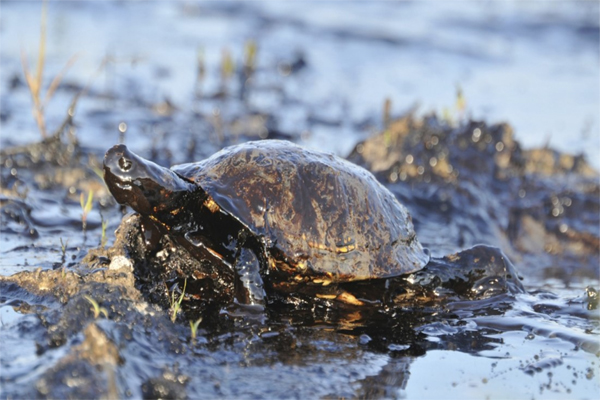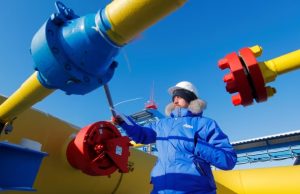
Daina Bagot, Kaieteur News
GEORGETOWN
EnergiesNet.com 03 22 2022
Even after cleanup activities, the lasting and devastating impacts of an oil spill stemming from the Yellowtail project site could take more than a decade before the country fully recovers.
The Yellowtail project is ExxonMobil’s fourth development that is currently awaiting approval. It is located in the Stabroek Block of Guyana’s Exclusive Economic Zone (EEZ). Production of some 250,000 barrels of oil per day (bpd) is scheduled to commence in late 2025 or early 2026, with operations continuing for at least 20 years.
The Project is located approximately 203 kilometers (approximately 126 miles) northeast of the coastline of Georgetown in waters approximately 1,700 to 1,900 meters (5,577 to 6,234 feet) deep. The Project will develop the offshore resource by drilling approximately 41 to 67 development wells, including production, water injection, and gas re-injection wells, and using a Floating Production Storage and Offloading (FPSO) vessel to process, store, and offload the recovered oil.
Exxon’s subsidiary, Esso Exploration and Production Guyana Limited (EEPGL) in its Environmental Impact Assessment (EIA), submitted to the Environmental Protection Agency (EPA) for review, has warned that Guyana could take more than 10 years before it recovers from an oil spill offshore.
According to the EIA, at Section 3.5, the Project would not cause irreversible damage to onshore areas of Guyana. The same could not be said however for the country’s waters. According to that subsection “…in the unlikely event of a large marine oil spill, little irreversible damage would be expected, although it could take a decade or more for all resources to fully recover…”
The text goes on to explain that the impacts of the spill would be dependent on several factors, inclusive of the volume or severity of the spill as well as the duration of the release, in addition to the time of year at which the release were to occur. Notably, EEPGL’s Consultant that prepared the EIA, the Environmental Resources Management (ERM) acknowledged that the risk of an oil spill would be present in this project. ExxonMobil has consistently assured that such events are “unlikely” to occur.
At Section 3.2.5 of the EIA, ERM details “The Project will be producing, processing, storing, and offloading oil as its core activity, so the risk of an oil spill would be present.”
In fact, EEPGL in the EIA identified 16 spill scenarios, including spills of different types of hydrocarbons such as crude oil, marine diesel, fuel oil, lubricating oil and non-aqueous drilling fluid (NADF), with several being applicable for spills at the shorebases and on vessels in the Demerara River estuary (e.g., from a supply vessel) or in the Atlantic Ocean from a well, drillship, supply vessel, tanker, or FPSO vessel. The largest of these scenarios considered a loss-of-well-control incident at the seafloor.
The document concluded, “Even though the probability of a spill is very low, such an oil spill would likely have adverse impacts on marine resources in the area impacted by the spill. Those resources most at risk would be marine water quality, seabirds, marine mammals, and marine turtles…although effective implementation of the OSRP (Oil Spill Response Plan) would help mitigate this risk by further reducing the ocean surface area impacted by a spill and oil exposure to these species, the residual risk to all of these resources aside from marine mammals and seabirds as a whole is considered Moderate.”
Research by this newspaper has found that the impacts of an oil spill, even after a cleanup, are likely to have lasting effects on ecosystems. For instance, a study published by Science Direct, a website which provides access to a large bibliographic database of scientific and medical publications and hosts over 18 million pieces of content from more than 4,000 academic journals and 30,000 e-books said “a time period of up to 20 years or longer is required for deep mud coastal habitats to recover from the toxic impact of catastrophic oil spills. This is due to the long term persistence of oil trapped in anoxic sediments and subsequent release into the water column.”
That article summarized the results from a long term assessment of an oil spill into a coastal fringe mangrove ecosystem in Panama.
The National Oceanic and Atmospheric Administration (NOAA) also explained that cleanup activities never remove 100 percent of the spilled oil, which also contributes to prolonged impacts.
Here in Guyana, the regulator body, EPA is now in the process of securing a US$2 billion insurance coverage from the major oil company operating in the country. This is so even as the Liza Two Permit issued by the body mandates full insurance coverage, from the parent company to cover for damages, relating to an oil spill.
kaieteurnewsonline.co, 03 21 2022












